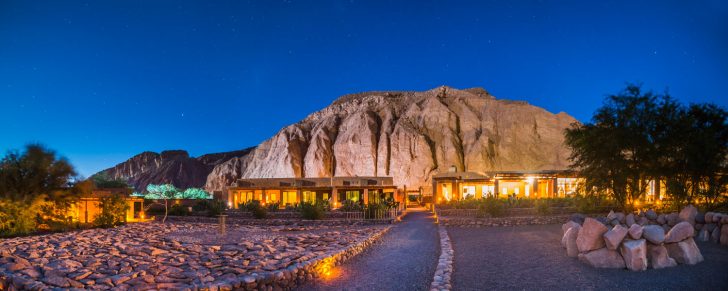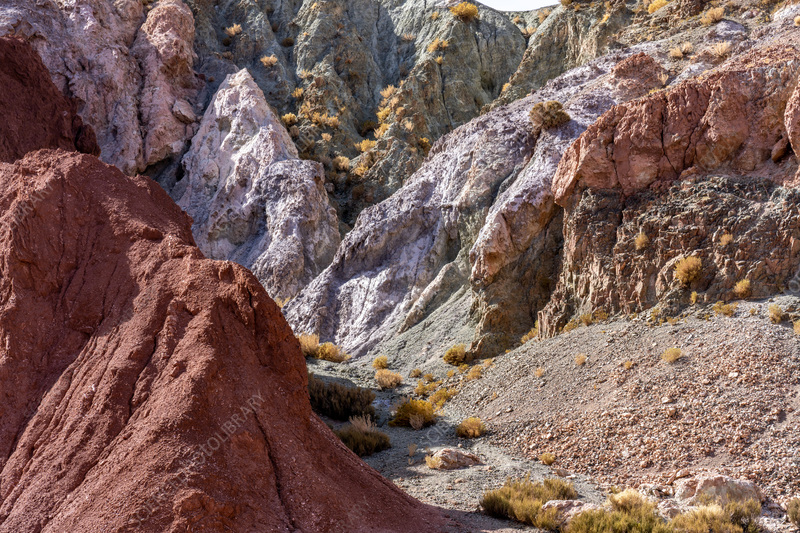Under the Desert Stars: A Geologist's Journey Through the Atacama

Hola, fellow travelers and sky-gazers! Mateo Vargas here, a 42-year-old geologist and amateur astronomer from Buenos Aires. For years, I've dreamt of exploring the Atacama Desert in Chile, a place renowned for its otherworldly landscapes, unique mineral compositions, and some of the darkest, most pristine skies on Earth. This dream recently became a reality, and I'm thrilled to share my seven-day solo adventure with you, courtesy of VistaLocation.com. Prepare to be amazed!
Day 1: Arrival and Desert Oasis at Alto Atacama
My journey began in San Pedro de Atacama, a charming oasis town that serves as the gateway to the desert’s wonders. After a smooth transfer arranged by VistaLocation, I arrived at the Alto Atacama Desert Lodge & Spa. This isn't just a hotel; it's an experience. The architecture is breathtaking, seamlessly blending into the surrounding landscape with adobe walls and natural materials. Stepping onto the property felt like entering a different world. The lodge is also deeply committed to minimizing light pollution, a crucial factor for my astronomical pursuits. Knowing that the lodge provided private stargazing platforms put the perfect final touch on my first day.
Day 2: Unveiling the Cosmos with ALMA
The highlight of my trip, undoubtedly, was the guided stargazing tour that included access to the Atacama Large Millimeter/submillimeter Array (ALMA) Observatory. The sheer scale of ALMA is astounding. Perched at a staggering altitude of 5,000 meters (16,400 feet), the air is incredibly thin, so acclimatization is key (thankfully, the Alto Atacama Lodge prepared me well with acclimatization tips!). The observatory consists of 66 high-precision antennas, with the 12-meter antennas being the most prominent. These antennas are designed to detect millimeter and submillimeter wavelengths, allowing astronomers to study the coldest and most distant objects in the universe, peering through cosmic dust clouds that block visible light.
But the real magic happened when I turned my eyes toward the night sky. I've seen the Milky Way from Buenos Aires, but the clarity in the Atacama was on a completely different level. Constellations I only vaguely recognized back home were now vividly distinct. Scorpius, Sagittarius, Orion – they all blazed with an intensity I had never witnessed before. The guide pointed out nebulae like the Lagoon Nebula and the Trifid Nebula, their ethereal glows almost tangible. The most profound experience was witnessing the Carina Nebula. From Buenos Aires, it's a faint smudge; here, it was a swirling, vibrant tapestry of gas and dust, a stellar nursery teeming with newborn stars. It was breathtaking.
Day 3: Sandboarding in Valle de la Muerte
After a night amongst the stars, it was time for some earthly adventure. Day 3 was dedicated to sandboarding in Valle de la Muerte (Death Valley). Despite the ominous name, the valley is strikingly beautiful. The rust-colored sand dunes stretch as far as the eye can see, sculpted by the relentless desert winds. Strapping on the sandboard felt like preparing for a snowboard run, albeit on a much warmer "slope."
The adrenaline rush of speeding down the steep dunes was exhilarating. As a geologist, I couldn't help but analyze the sand beneath my board. The fine grains, rich in iron oxides, gave the dunes their characteristic red hue. Feeling the wind whip past my face, I pondered the millennia it took for these dunes to form. Safety was paramount; our guide provided helmets and ensured we understood the basic techniques before letting us loose. Sandboarding in Death Valley was a unique and unforgettable experience, a testament to the Atacama's diverse landscapes.

Day 4: El Tatio Geysers at Sunrise
Waking up before dawn is never easy, but the promise of witnessing the El Tatio geysers at sunrise made it worthwhile. The pre-dawn chill was intense; I bundled up in layers, grateful for the warm clothing I'd packed. As we approached the geyser field, the landscape transformed into an otherworldly spectacle. Steaming geysers erupted from the earth, creating a surreal scene bathed in the soft glow of the rising sun.
The contrast between the frigid air and the boiling water was striking. As a geologist, I found the geological processes at play fascinating. El Tatio is located in a volcanic region, and the geysers are formed when groundwater is heated by magma deep beneath the surface. The hot water rises through cracks and fissures, eventually erupting at the surface in spectacular displays of steam and boiling water. At an altitude of 4,320 meters (14,170 feet), the air is thin, so I took it slow, remembering to breathe deeply and stay hydrated, all of which I prepared for accordingly before my trip.
Day 5: Rainbow Valley's Mineral Masterpiece
Day 5 took me to Valle Arcoíris (Rainbow Valley), a geological marvel showcasing a spectrum of colors. The sandstone formations are stained with vibrant hues of red, green, white, and yellow, caused by different mineral deposits. This valley is a geologist's dream!
The different mineral layers were formed over millions of years through the deposition of sediments and the precipitation of minerals from groundwater. Iron oxides create the red and brown hues, while copper minerals produce the green and blue shades. I carefully used my geological hammer to collect small samples for further study (of course, only from areas where it was permitted and in an ethically responsible manner!). The Rainbow Valley is a testament to the Earth's artistic power, a living geology lesson painted across the landscape.
Day 6: Atacama Hiking vs. Andes Hiking
Having spent considerable time hiking in the Andes, I was curious about how hiking in the Atacama would compare. I found it similar, yet distinct. The altitude presents a shared challenge, demanding proper acclimatization and pacing. However, the Atacama's aridity introduces unique considerations. Hydration is even more critical here, and sun protection is non-negotiable. The mineral composition of the terrain also differs, with the Atacama's salt flats and volcanic rock presenting different challenges underfoot compared to the Andes' more varied rock types. My hiking boots felt just as sturdy, but I packed extra water and electrolyte tablets for this adventure.
Day 7: Reflections and Future Explorations
As my journey through the Atacama Desert comes to an end, I find myself deeply moved by its beauty and captivated by its scientific wonders. This trip was more than just a vacation; it was a personal exploration of my passions for geology and astronomy. The Atacama's landscapes, from the towering dunes of Death Valley to the steaming geysers of El Tatio and the vibrant hues of Rainbow Valley, have left an indelible mark on my soul. And those dark skies! The experience of witnessing the Milky Way in all its glory is something I will cherish forever.
For those of you seeking a similar adventure, I highly recommend exploring the luxury tours and accommodations offered through Vistalocation.com. They provide the perfect blend of comfort, expert guidance, and access to the Atacama's most extraordinary destinations.
If you're interested in learning more about my geological findings and adventures, please visit my blog, AndesAndAtacama.com.
Until next time, keep looking up!

A Taste of the Atacama: Culinary Delights
Beyond the landscapes and celestial wonders, I also savored the local cuisine. Pastel de Choclo, a traditional Chilean corn pie, was a particular favorite. The savory-sweet flavors, with a filling of ground beef, onions, olives, and hard-boiled eggs, topped with a creamy corn mixture, were incredibly comforting in the desert climate. Another treat was Picarones, Chilean donuts served with a rich, sugary syrup. The crispy texture and the sweet sauce were the perfect indulgence after a long day of exploring. I also tried a local craft beer made with Rica-Rica, a local herb. The arid climate necessitates unique food preservation techniques, such as sun-drying fruits and vegetables, which adds another layer of cultural richness to the region's culinary traditions. I was very appreciative of the unique flavors of the Atacama.